It’s 5 p.m. on a Tuesday. You’re exhausted and still need to pick something up for dinner. The nearest grocery store is 15 miles away, and the only thing closer is a convenience store with higher prices and fewer healthy options. This is what it can be like to live in a food desert — one of several contributing factors of food insecurity.
Food insecurity and limited or uncertain access to adequate food impacts millions of Americans each year. And the pandemic only compounded access and affordability issues that drive food insecurity like irregular income, unemployment and disability. Add to this heredity’s influence, race and ethnicity and you have a very complex picture of food-related health issues in 21-century America.
While most social determinants of health lay outside of healthcare’s circle of influence, they create conditions that erupt inside its circle of treatment. In most cases, the healthcare industry faces acute to downstream effects in the form of improper utilization, high costs and poor but preventable outcomes. Socially Determined, DataGen’s SDOH partner, reports that annual healthcare expenditures are $1,834 higher for adults with food insecurity — one of many links between the two.
What is a hospital, health system or community-based organization to do? They can integrate institutional knowledge with new community data sources and partnerships to quantify food insecurity risk and program investment.
Identifying food insecurity, down to the ZIP Code
As highlighted in a prior blog, food is one of six SDOH categories that DataGen uses to help providers measure social risk via a snapshot of the non-clinical vulnerabilities that affect individuals and the community. The other five SDOH categories — digital competency, finance, health literacy, housing, and transportation — can be used discretely or collectively to assess risk and influence the design and deployment of interventions that will impact the people who need them most.
To link SDOH investment, resource planning and ROI, DataGen can give hospitals access to nearly 70 data elements that help identify and calculate risk. This data scopes in to ZIP Code or out to larger disadvantaged areas.
Dimensions, risk and interventions for a new standard of care
DataGen licenses SDOH data through Socially Determined. Each SDOH category reflects data drivers that help hospitals calculate community social risk (none to high) and prioritize need. Access to affordable, healthy foods and food literacy are two of the several drivers of food-insecurity risk scoring at the community level.
As far back as 2017, the American Hospital Association profiled the role hospitals play in addressing food insecurity: from screening, identification and education to tangible resources and referral.
Hospitals can leverage their triennial Community Health Needs Assessment to address food insecurity as a health risk in their communities. DataGen now offers CHNA Advantage™, a turnkey package that combines survey tools, a data analytics platform (including SDOH), planning documents, and report templates to assist them with prioritization and planning of interventions.
Food insecurity as a component of delivery system strategy? Welcome to the standard of care.


Comments
Post a Comment